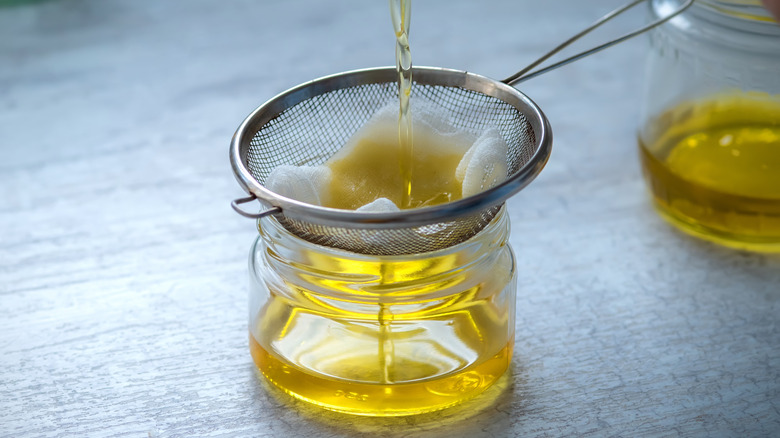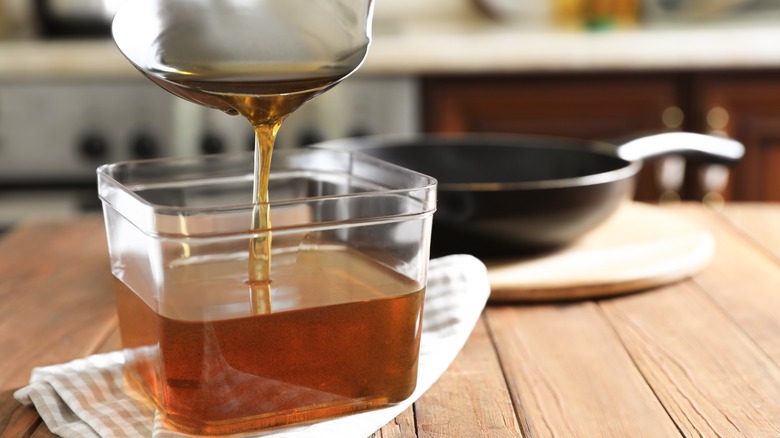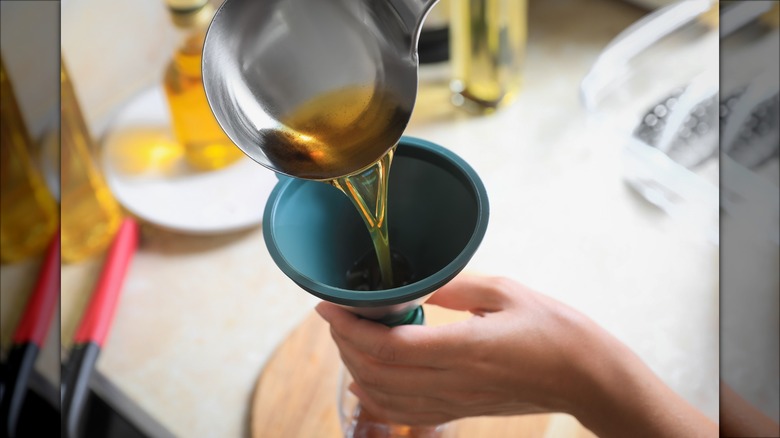For Better Deep Frying, You Need To Be Filtering Your Oil
We may receive a commission on purchases made from links.
When it comes down to it, is there anything tastier than deep-fried food? The act of immersing breaded chicken, seafood, veggies, hunks of dough, or even balls of cheese into a vat of bubbling hot oil is an almost holy thing, and the crispy, juicy goodness that follows hits us in a deep, comforting place. Most cultures around the globe have their own takes on this cooking method — from Japanese tempura to Mediterranean calamari to hush puppies in the American South — proving its universal appeal. This is driven home by the Korean proverb: "Even a shoe tastes good if it's deep-fried."
That said, not all deep-fried dishes are created equal, which often comes down to the state of the oil rather than the ingredients lowered into it. Restaurants and commercial kitchens long ago realized that it's all about good oil, and these days rely on filtration systems to not only extend its lifespan but also guarantee quality. While the systems and services employed by dining professionals can be complex and expensive, there are much simpler methods that you can adopt in your home kitchen to make sure that your oil brings out the maximum crunch and flavor when it comes time to deep-fry.
Bad oil means bad food
With slick liquids, crumbly breading, and extreme heat, deep frying is an inherently messy affair, leaving microscopic bits of food and crisped chunks of batter floating in the oil. This flotsam is not just unsightly, it negatively impacts the flavor. Each time you reheat the oil, you end up charring the detritus over again. "As it goes up and down in temperature, you're burning those pieces and creating bitterness," Michael Napoleon, senior product development research chef at Tastepoint, told QSR Magazine. "[A]ll those particles are releasing that flavor into your oil. And that's no good."
More concerning than the acrid flavor is the risk this all may pose to your health. Unfiltered oil can contain chemicals that, as reported by Livestrong, can lead to cancer. On top of that, the fats in the oil can transform into trans fats, which are associated with an increase in cholesterol, leading to high blood pressure and heart disease, according to MedlinePlus. The fumes from reheated oil can even release toxic particles into the air that are harmful to breathe in, which can occur even before the oil reaches its smoking point.
Keeping it clean
While using clean oil is essential, it may seem wasteful to dispose of a whole pot after just one session. And for those who deep-fry often, the cost of using pristine oil out of the bottle each time can easily add up. This is when home-filtering methods come into play. The fastest and easiest technique is to simply drain the cold used oil through a coffee filter placed over a fine mesh strainer. This will sieve out the fried bits and pieces but may leave the leftover oil tasting slightly used. But how do you know when it's time to change your oil altogether? Color is key: when things get cloudy or darker than caramel, it's time for the oil to go.
Perhaps the most effective way to clarify your oil is by employing a cornstarch slurry. Simply add ¼ a cup of water and 1 tablespoon of cornstarch for every cup of oil and then slowly heat it up. After about 10 minutes, the slurry will solidify at the top, soaking up all of the debris. You can then pour the oil into a jar through a strainer that will catch the slurry gel, which you simply throw out. For those extra-committed to deep-frying at home, there are devices you can purchase that will do the heavy lifting for you, ranging from self-filtering home deep-fryers to simple strainers. Whatever you choose, clear, clean oil will guarantee your deep-fried dishes get the love they deserve.


